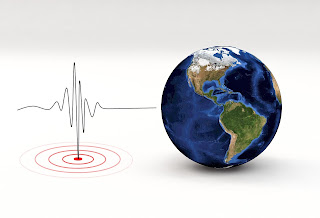Turkey Earthquake
Turkey Earthquake: Why Was It So Deadly? Shortly after this earthquake occurred near Gaziantep, a second earthquake occurred in the same vicinity, and it was as large as the first.
Why was it so deadly?
It was a big earthquake. The tremor near Gaziantep was measured at 7.8, which is classified as a "major" tremor on the official magnitude scale. Its center was relatively shallow (18 km below the surface), causing severe damage to surface buildings.
Professor Joanna Fore Walker, head of the Institute for Risk and Disaster Reduction at University College London, said: "If you take the deadliest earthquakes of any year, there have only been two earthquakes of this magnitude in the last 10 years, and only four in the previous 10 years."
But it's not just the strength of the shock that causes destruction.
The earthquake occurred at dawn when people were sleeping inside their homes.
The strength of buildings is also another factor that affects here.
Dr Carmen Solana, who studies food science and risk communication at the University of Portsmouth, said: "Unfortunately, in southern Turkey, and especially in Syria, the infrastructure is fragile. So, saving lives is now very much dependent on the response [of emergency services] to find survivors. The next 24 hours are critical. After 48 hours, the number of survivors drops dramatically." Namely.
Since this is a region that hasn't had a major earthquake or warning sign for over 200 years, it will be less prepared than a region that is used to experiencing shocks.
What causes earthquakes?
The Earth's crust is made up of separate parts called 'tectonic plates'. These are located close to each other.
These discs often try to move, but are prevented by the friction of the adjacent discs. But sometimes pressure builds up between them and eventually one of the discs collides and moves at the same time, thus moving the surface of the earth.
This earthquake is caused by the Arabian plate moving northwards and colliding with the Anatolian plate.
Due to the friction between these tectonic plates, many damaging earthquakes have occurred in the past.
This caused an earthquake with a magnitude of 7.4 on August 13, 1822. That was significantly less powerful than Monday's 7.8-magnitude earthquake.
However, the earthquake in the 19th century caused great damage to the cities in the area and the death toll in Aleppo city alone was 7000. Then there were damaging aftershocks for nearly a year.
Several aftershocks have occurred after Monday's earthquake and scientists expect that aftershocks will continue to occur this time, as has happened after previous strong earthquakes in the region.
How are earthquakes measured?
Earthquakes are measured on a scale called the 'moment magnitude scale'.
A tremor of magnitude 2.5 or less is not felt by humans but is detected by seismometers. Shocks of up to 5 units are felt on the surface and cause minor damage. The Turkish earthquake, classified as 7.8 units, is a strong earthquake and causes severe damage, as has happened in this case.
Any earthquake above magnitude 8 will cause catastrophic losses and can completely destroy the settlements located at the epicenter.






Comments
Post a Comment